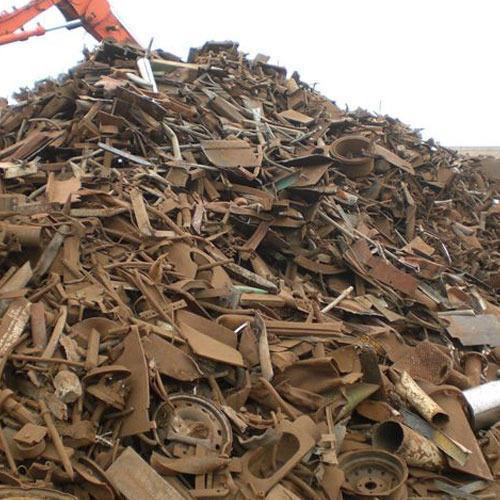HEAVY MELTING SCRAP
Heavy Melting Scrap
The term “heavy melting steel” (HMS) or “heavy melting scrap” refers to recycled steel and wrought iron. It is divided into two major categories: HMS 1 and HMS 2, with HMS 1 including no galvanized or blackened steel and HMS 2 containing both. The Institute of Scrap Recycling Industries further divides the groups:
ISRI 200 (HMS 1): Wrought iron or steel scrap with a thickness of 14 inches or more. All works must be less than 60 by 24 inches in size.
ISRI 201 (HMS 1): Same as ISRI 200, but components must be less than 3618 in in length.
ISRI 202 (HMS 1): Same as ISRI 200, but components must be less than 6018 in in length.
ISRI 203 (HMS 2): Black and galvanized wrought iron or steel scrap, 18 inch and up


HMS 1
HMS 1 is made up of heavy melting steel scrap with a minimum thickness of 1/4 inch and no galvanized or blackened steel. There are also the following categories:
ISRI 200 (HMS 1): Wrought iron or steel scrap with a thickness of 14 inches or more. All works must be less than 60 by 24 inches in size.
ISRI 201 (HMS 1): Same as ISRI 200, but components must be less than 3618 in in length.
ISRI 202 (HMS 1): Same as ISRI 200, but components must be less than 6018 in in length.
HMS 1 & 2
The term “heavy melting steel” (HMS) or “heavy melting scrap” refers to recycled steel and wrought iron. It is divided into two major categories: HMS 1 and HMS 2, with HMS 1 including no galvanized or blackened steel and HMS 2 containing both. The Institute of Scrap Recycling Industries further divides the groups:
The HMS 1 and 2 are very popular, especially in the Eastern India. Both HMS 1 and 2 are made up entirely of obsolete scrap. This is iron and steel that has been salvaged from artefacts that have been demolished or removed at the end of their useful lives. ISRI (North America’s Institute of Scrap Recycling Industries) rules encompass variations in maximum component size. HMS is commonly traded as a mix of 1 and 2, either as a premium blend (80:20) or as a lower quality mix (70:30). (60:40). H2 from Japan and A3 from the CIS are two other notable heavy scrap categories.
Our scrap metal company specializes in purchasing and selling scrap metal for industrial metal companies in need of iron, steel, and copper. Scrap metal recycling a mix of mill scrap (stamping, cuttings, bars, etc. ), industrial scrap pieces (nuts, bolts, etc. ), auto and truck frames and bodies, railroad scrap (wheels, axles, locomotive and carriage parts, etc. ), ship scrap (fittings, plate pieces, parts), construction scrap (plate, bars, angle pieces, rods, steel pipe, etc.) and miscellaneous commercial scrap (appliance casings, frames and parts, etc.).
Used Rails
Our scrap metal company specializes in purchasing and selling scrap metal for industrial metal companies in need of iron, steel, and copper. Scrap metal recycling a mix of mill scrap (stamping, cuttings, bars, etc. ), industrial scrap pieces (nuts, bolts, etc. ), auto and truck frames and bodies, railroad scrap (wheels, axles, locomotive and carriage parts, etc. ), ship scrap (fittings, plate pieces, parts), construction scrap (plate, bars, angle pieces, rods, steel pipe, etc.) and miscellaneous commercial scrap (appliance casings, frames and parts, etc.).
Ingots and Billets
The term “ingot” refers to large-scale castings made in a foundry or during the production of iron. Ingots do not have a set of standard dimensions. The molten metal from the blast furnace is poured into massive, cylindrical ladles at steel mills. Ingots are frequently shaped throughout the steelmaking process.
The size of a billet is usually smaller. A billet is defined as a casting with a square cross section. The cross section of billets is less than 36 square inches.
